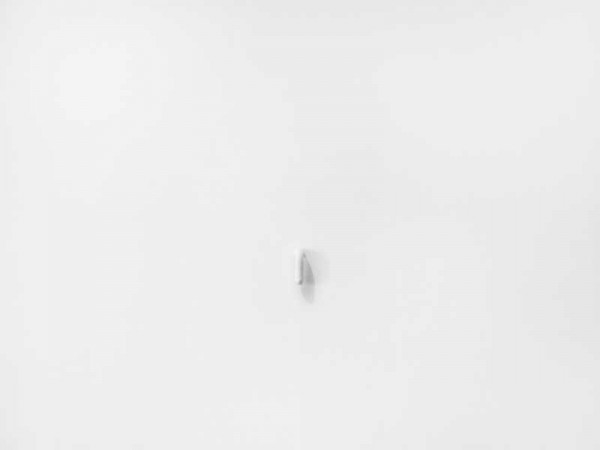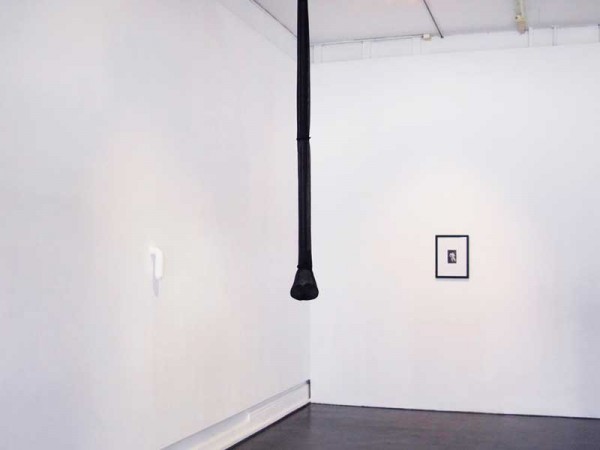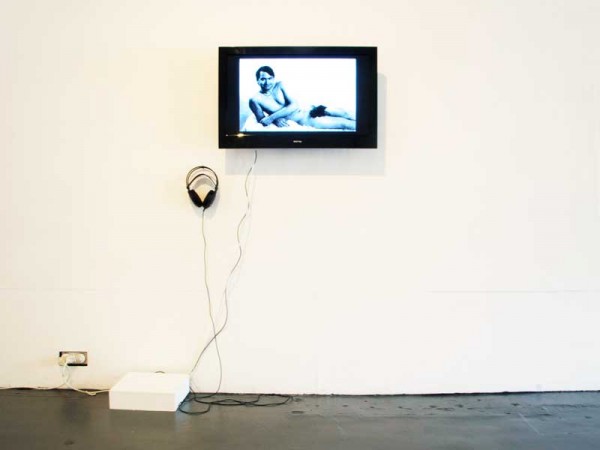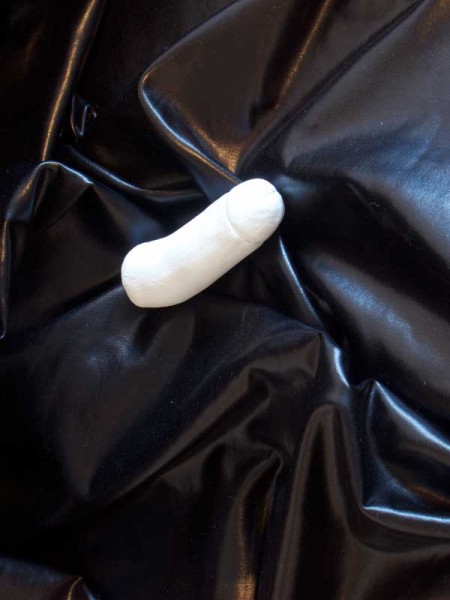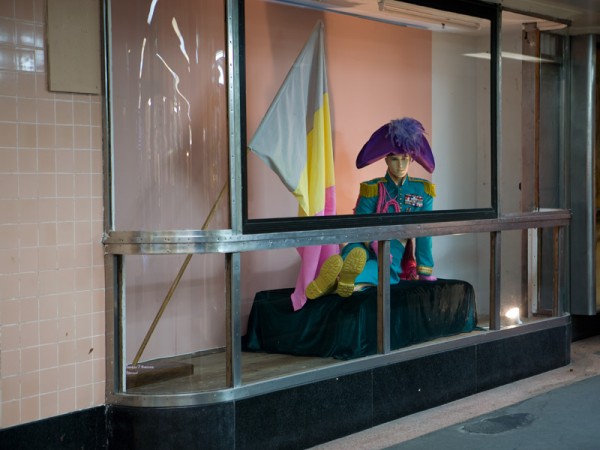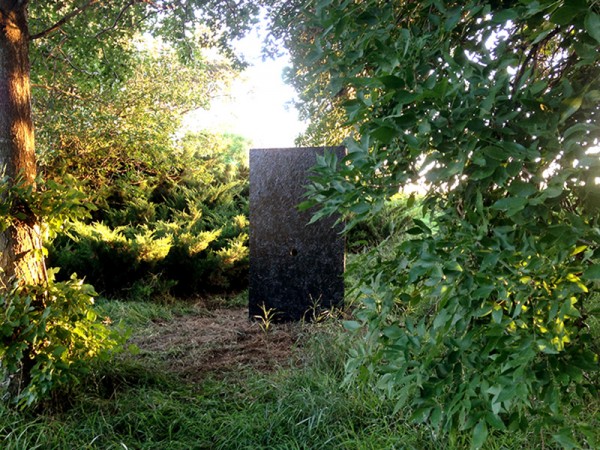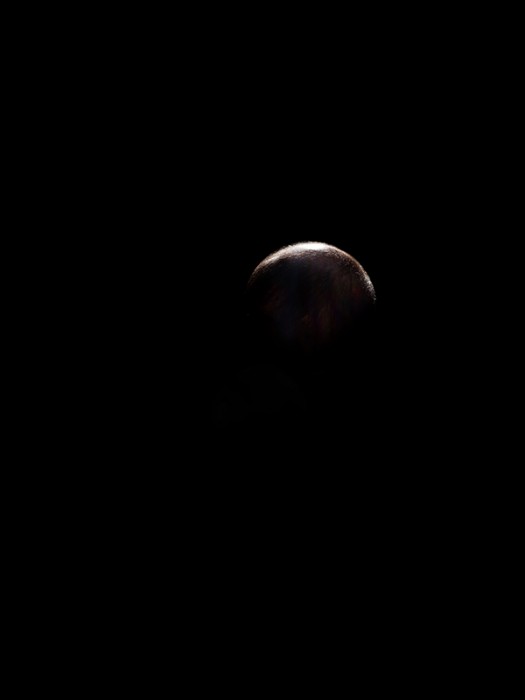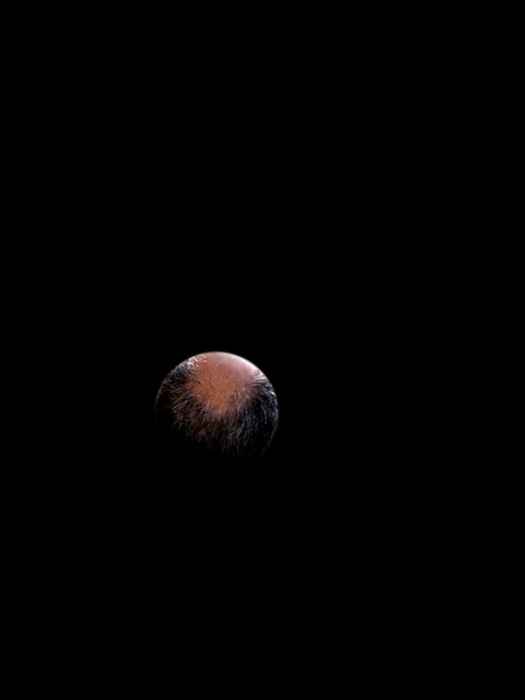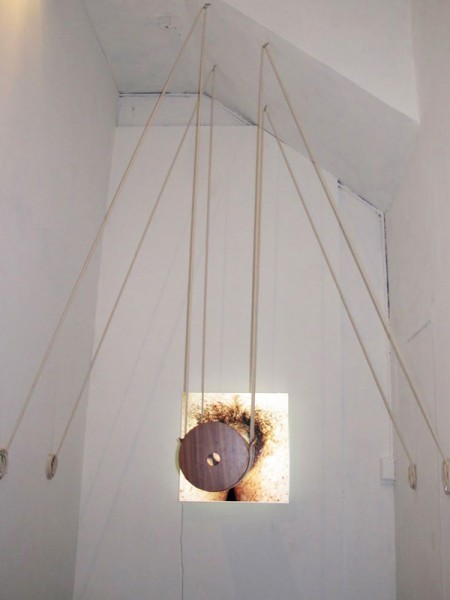Q&A: Andrew j burford
By Rafael Soldi | January 12, 2017
Andrew J Burford is a queer artist and co-founder of univ-erse. Andrew was raised in South Africa and in 2008 completed his degree in Creative Advertising at The University of West London, after which he moved to Australia, where he developed his artistic career. Andrew has work in held in private collections across Australia, and in 2011, at the Centre for Contemporary Photography, was awarded the Kodak Professional Excellence in Photomedia Award, in 2012 Andrew was an award finalist for The Josephine Ulrick and Win Schubert Photography Award and has since spoken and been exhibited internationally in the USA, Australia, Germany and the United Kingdom.
Rafael Soldi: Your work challenges—quite explicitly—the architecture of masculinity. What interests you about questioning masculinity and what lead you to this becoming a focus on your practice?
Andrew J Burford: I suppose I’ve always been anxious about gender roles and constructs. As a closeted queer kid, growing up in South Africa, it was made pretty clear by the Christian majority what was ‘normal’ and how a male or female were meant to act. I always knew these ideals were complicated and not something I felt I fit into, but it wasn’t until my 20’s that I had the self confidence to publicly do something about it and come out. When I moved to Australia I became friends with some very open-minded and progressive people, some of who were experimenting with gender, it really expanded my thinking as a whole. I spent a long time assessing my own gender and trying to work out what effect different influences had on my version of masculinity. It became so apparent to me just how constructed gender was, and the more I looked at it, the more annoyed I became with how stifling the ‘rules’ were. Growing up I was an effeminate boy and it was really tough. Being told to behave in a way which doesn't feel natural to you, is not only difficult but also terrifying. For a long time I felt that something was wrong with me, no kid should feel that way. I suppose I make work about masculinity to open a discussion about it in the hopes that someone will look at it and perhaps expand their beliefs. Once you realise that people are just people, regardless of what they look like or who they have sex with, life becomes much easier.
RS: You often use yourself in your work, is this important to you?
AJB: While making the series Untitled (Taylor) I got to a point where I felt like I was making work about an area of gender expression that I had no personal knowledge of. Often with politics, especially queer or gender based conversations, there has been a tendency for others speak on behalf of the marginalised (namely straight white men), this is something I am acutely aware of (especially seeing as I am a CIS white male). I actively chose to start making work which I could personally comment on and this, combined with my inability to not be in control, organically led to me including myself in my work. I like making work about me, about my masculinity, I wouldn’t want to tell anyone what masculinity means to them, so instead, I'm telling them what it means to me. I also like using my body, I still struggle with the way I’m perceived and I find it very therapeutic to explore that within my art practice.
RS: One of the elements that you often borrow is language—written, spoken, visual, colloquial. What is it about the language of masculinity that draws you? Can you describe some works in which you use it?
AJB: I’m much more interested in the subtle nuances that support and encourage normative gender roles, and language is one of them. In Business As Usual I wanted to focus on how men use gestures to assert their masculinity. I was really interested in gestures such as shaking hands, pointing, clicking a pen etc. If you think about it there are hundreds of gestures which men can use to subtly prove their ‘manliness’, by taking the gestures out of context and focussing on them they become exposed as the ridiculous performances that they are. I made a video of these gestures recurring on a loop with an off beat drum, if you watch it long enough the gestures loose all their significance , much like when you say the same word over and over and it turns into a sound with no meaning.
The Man, The Legend is a work I made about Jonah Falcon, who was famously stopped by the TSA when they thought his penis was a concealed weapon. After a bunch of internet stalking, it became really clear that while Jonah said he didn't want to be known for just his penis, its was just that which ruined his career as an actor. He couldn't be taken seriously, and when challenged he would literally just get it out. I was really interested in how his dick, which is meant to give him power (just like Samson’s hair) was the cause of his downfall. The title of the work was taken from the t shirt slogan which had an arrow pointing downwards to the ‘legend’, a great example of how men are told to celebrate their penis’ and its power (quite unlike how women are told to view their genitals).
In 2014 I exhibited Armour, a piece I made for a glass vitrine in one of Melbourne’s underground train stations. I wanted use the space to discuss the grandiose nature of masculinity and heteronormativity within the armed forces. I did this by reimagining the ceremonial military uniform and creating a diorama of sorts. I wanted to reference the Thomas Eakins painting The Swimming Hole which is a beautiful scene of young men relaxing and swimming in the nude. I wanted to imagine this scene of romantic, young male camaraderie. I managed to find a mannequin of a young reclining male, he was beautiful. In the dress suit, which was now pink, green and gold, with subtle phallic embellishments, he looked the vision of queer pride.
Titles are important to me. They support the work, and in some cases are a solid piece of the artwork. They also offer the perfect opportunity for a good pun. The title Armour is not only a reference to the physical armour worn in the armed forces, but also the armour that masculinity is considered to be. Its a shield, but that doesn't mean its not flawed.
RS: Tell us about Don’t Let The Sun Go Down On Me.
AJB: In 2014, while at a residency in Nebraska, I constructed a 6 foot wall in a clearing of the farm we were staying on. The wall was positioned at the foot of a hill with a small hole in the middle which would strategically catch the last few rays of sun as it set over the hill. The hole was also the perfect height to be considered a glory hole; normally associated with anonymous sex between men in public restrooms.
I created this piece for many reasons. Firstly I wanted to make a large piece of queer art which would cut through the landscape, not only a reference to the (straight) male dominated history of American land art, but also as a means to challenge the conservative views of the Nebraska state’s view on non-heteronormative lifestyles, especially considering the number of truck stops you have to go through to get there.
To get to Nebraska I took the Greyhound from Toronto, along the way we stopped at truck stops all across the country; I became so interested in them; they can be terrifying places at 4 A.M. when you don't know where you are. After a bit of searching I came across a blog that a young station attendant had started which detailed his experiences. He described a situation of men on the road searching for company, sexual release and affection. It’s very similar to the ‘prison effect’ of men engaging in homosexual behaviour in isolated environments out of ‘necessity’.
I decided to make a beautiful piece of land art which also had a darker alternative use. Like the sunset at the end of an epic western, which leads you over the hill to your death, or in this case, the demise of heteronormativity.
The title was taken from a song which Elton John and George Micheal duetted on, which very neatly references the possible use of the wall by man and nature. George Micheal was a big influence on me as a young queer man, his public indiscretions were a great interest of mine, he was the fist person I knew of who got caught doing something deviant and was unapologetic, he taught me that to be gay and sexual was more than ok, it was great. Having the opportunity to use George Micheal in a piece of artwork about public sex was a really great moment for me.
RS: Though I suspect most of your work is colored by personal experience, The Shirt off Dad’s Back features your mother and goes into a much more personal exploration than other pieces. Can you talk more about this piece?
AJB: I hate the idea of men passing on ideals of masculinity down to their sons. Teaching boys what it is to be a man is such an archaic tool. Men become crippled by the masculinity they’re told to embody. They’re taught not to be emotional, to be strong, to fight, to be successful etc, and through all of this the mother’s role becomes one of care, a secondary character. I wanted to make a work which challenged the ideal of sons having to take on the father’s role, or even the notion of learning from your elders. We’re at a time where younger people are questioning things more and more. We should be making new examples not still learning from old ones.
The Shirt off Dad’s Back is a video I made with my mother where she dresses me in all my deceased fathers work shirts. As she places the shirts over one another, I get larger and larger and she slowly disappears behind me. I wanted the video to be about my father and his influence on my masculinity, but felt it really important to include my mother in that. The video became this visual representation of a mother’s role within the family as the care giver, she is protecting me by adding layers of generational, constructed masculinity but in the process I become less able to move freely and function.
It is important for me to use my personal experiences in an artwork, and I love being able to engage with my mother on an artistic level. I anticipate making more work with and about her.
RS: What challenges, if any, have you had in exhibiting your work? Do you find that curators and galleries struggle to consider and exhibit your work outside of a queer context?
AJB: For a long time I had a real problem with being considered a ‘queer artist’. I didn't want to be pigeon-holed, and it felt like I was more marginalised with the title. However, as I progress in my career I’ve come to realise how important it is to be a queer artist. I’m making work about challenging imposed ideals with the hope that eventually it will be different, and I think its important that I present myself with transparency while doing that, but saying that; to only be included in ‘queer’ shows is really frustrating and in someways pointless.
I make queer art, and I am queer, but to not be considered next to my peers who aren’t queer is a real shame, it leaves very little room for conversation. Having queers only represented in queer shows is like arguing with someone who agrees with you.
RS: Who/what are your influences?
AJB: Surprisingly for me, my parents. So much of the work I’ve made has come from anecdotal references to my father. My mother, without knowing, is the reason I am so interested in gender. As a child I watched her mould herself around other people, to be the best wife, to be a good mother and to be the woman other people expected her to be. I always wanted her to do what she wanted to do, but I never had the words to discuss it with her. I do now, I understand much more about the specifics of that structure now and am able to address it with the work I make.
I garner influence from all sorts of areas. I walk a lot, my favourite thing to do is walk around a city and take note of things of interest; interactions I see, body language, fashion etc. In terms of artists there are loads, and old favourite is Cindy Sherman, she got me initially interested in photography and gender representation with her Untitled Film Stills, Sara Lucas is one of my favourite artists, her orbs are sexual and ugly and so beautiful, her early work was a huge influence on me, when in college I would often visit the Tate Modern in London and for hours just stare at the image of her with eggs for breasts. Felix Gonzalez-Torres made beautiful work, I am very inspired by his minimalist approach and use of everyday objects to make such impactful work. His work was so personal and relatable and that’s something I definitely try to instil in my work. Claude Cahun was very important to me when I first started making artwork I was taken by her progressive work especially considering the time in which it was made. People have known for decades that gender is a performance, and yet here we are. Most recently I have become very interested in the work of Zackary Drucker, Boychild and Wu Tsang, performance is becoming more important in the way I interact with my practice.
RS: What’s next for you?
AJB: I am currently working on something totally focused on femininity, which gives me much anxiety, as I am all to aware of how long white guys have been telling women about how to be a woman. I’m hoping to make something which challenges that but also speaks to the femininity that I see as part of my masculinity.
I have also just started a label with my partner. We’ve developed a queer skateboarding / lifestyle brand with the aim of bringing queerness to the masculine heteronormative worlds of skateboarding and tattooing. We have a private queer tattoo studio and creative space in Berlin where we design apparel and think up ways to create inclusivity with visibility. Our hope is create a brand which embodies queerness and being good to one another, its called univ-erse and will soon take over :-)
All images © Andrew J Burford
